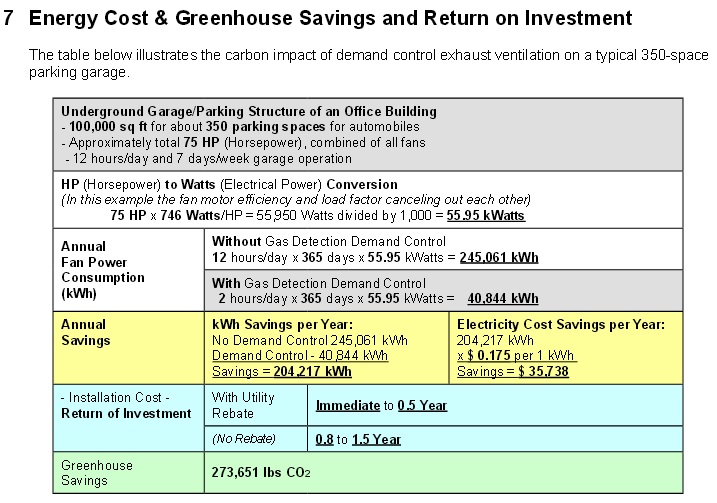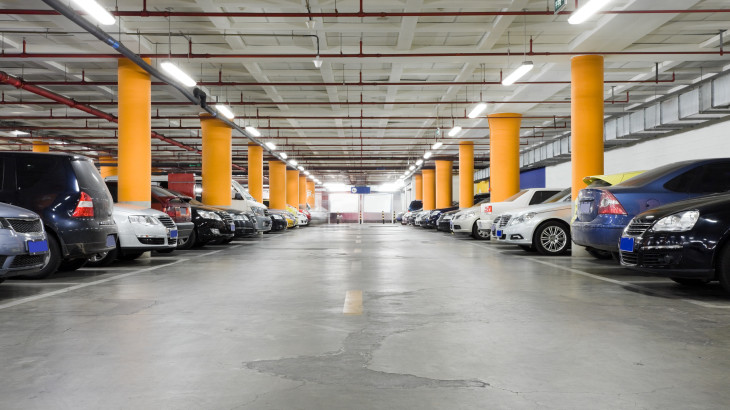We all know the cost-saving benefits of retrofitting old lighting with more energy efficient lighting in commercial facilities. It is especially true for facilities with multi-level, enclosed parking garages that require 24/7 lighting run times. In 2014, Energy.Gov’s Lighting Energy Efficiency in Parking (LEEP) campaign, a movement where over 100 U.S. businesses agreed to install more energy efficient lighting in their parking garages, reported energy savings up to 90%.
But this isn’t anything new. While lighting upgrades are an excellent way to reduce energy costs in many garages, lighting upgrades in enclosed garages may only account for 1/3 of the garage’s energy use. Assuming an enclosed parking garage is up to code, HVAC systems account for the majority of the energy usage. In fact, parking garage ventilation can account for 30% or more of the entire property’s energy consumption. Thinking beyond lighting and looking at HVAC control upgrades, we find simple and intelligent parking garage efficiency modifications that building managers can implement to save thousands of dollars annually on electricity costs.
Ventilation & DCV
All enclosed parking garages in the U.S. are required to meet ventilation standards set by the American Society of Heating, Refrigerating, and Air-Conditioning Engineers (ASHRAE) and the International Mechanical Code (IMC), a document published by the International Code Council (ICC). Standards are set to ensure an acceptable level of clean air flows through the occupied space. During peak hours, car exhaust will pollute the air with carbon monoxide (CO) and nitrogen oxide (NO2), so proper ventilation is necessary to ensure the health and well-being of occupants.
Both agencies require that ventilation fans run continuously during garage occupancy hours, typically 12 hours a day, 7 days a week. There is an exception to this standard: if gas detectors are installed, which monitor the volume of CO and NO2 in an occupied space. With gas detectors in place, a building manager can work with an energy services company (ESCO) to install sensor-based demand-controlled ventilation (DCV) systems. In essence, this allows the ventilation fans to run only when gas levels exceed the minimum levels for safety.
Depending on the CO and NO2 levels in the occupied space, the DCV system will turn the ventilation fan on. However, the system will calculate how much power is necessary to properly ventilate the occupied space. For example, the fans may only need to operate at 50% power, as long as it meets the basic ventilation requirements. During peak hours, of course, the fans will run at 100% capacity, but this is only for a short period of time. Without a DCV system, fans will always run at 100% power for the entire time the space is occupied. That’s a lot of wasted energy.
Heating & Cooling Savings
It is important to consider that some garages are temperature-controlled, normally with programmable thermostats. When noxious fumes are ventilated, so too is the hot or cold air in the garage. The more air that is ventilated, the more the HVAC system will need to run to get the temperature back to its set point, consuming fuel in the process. By reducing the amount of air that is being exhausted, you keep more of the heated or cooled air within the occupied space.
Look at how demand-controlled systems tied with gas sensors can present significant energy savings, as illustrated by the 2015 IMC Changes for Parking Garages graph below. You will see that fan power consumption drops from 245 kWh to 40 kWh, an 83% energy savings, with a less than one year ROI with a utility rebate.

While electricity costs vary state-by-state, the energy savings are undeniable. This simple, intelligently-designed parking garage efficiency improvement can save an average enclosed garage upwards of $35,000 annually.




